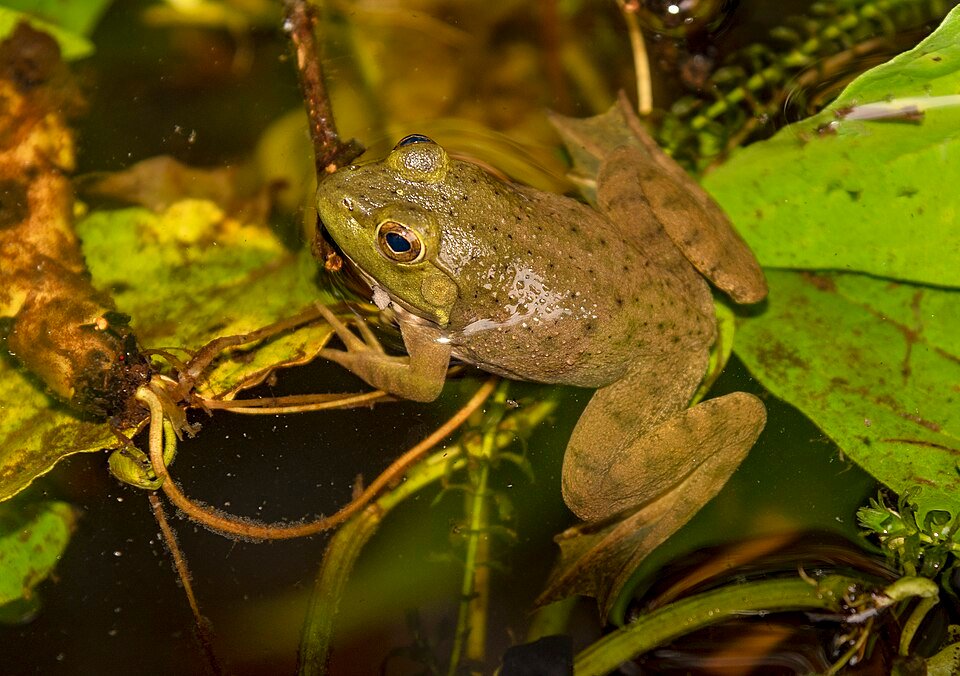Washington, USA – The North American Association for Environmental Education (NAAEE), in partnership with the National Oceanic and Atmospheric Administration (NOAA), is excited to award $150K to 10 projects that aim to enhance aquaculture literacy. These grants will support programming for a total of 4 NOAA Fisheries regions and their community members, many of whom have never had access to this level of aquaculture outreach and education resources. The 10 selected projects are serving 6 states, and include a variety of partnerships and collaborative activities.
These mini-grants will provide informal learning institutions (e.g., aquariums and visitor’s centers), aquaculture industry (e.g., shellfish, finfish, and seaweed farmers), and NOAA partners with support to co-develop innovative educational experiences that explore aquaculture topics. By requiring eligible applicants to build partnerships across the education, industry, and government sectors, NOAA and NAAEE are supporting innovative, first-of-their-kind efforts that pull from each sector’s unique expertise to address gaps in aquaculture literacy. Selected projects will implement locally relevant aquaculture literacy projects that enhance their audience’s understanding and engagement in aquaculture in their region.
Funding for this program is provided by NOAA Fisheries and administered by NAAEE. “We are thrilled to be part of this effort to enhance aquaculture literacy in communities across the nation,” said Kate Naughten, director of communications for NOAA Fisheries. “Much of our agency’s success is built on strong partnerships, so any time we can help engage communities and form new partnerships around the common goal of sustainable seafood we are all in.”
Supporting and implementing these cross-sectoral projects will provide each project’s audience(s) an opportunity to participate in high-quality programming that pairs aquaculture communication needs with existing research. In addition to using NOAA and NAAEE assets, these projects will make a significant contribution towards the overall success of NOAA’s sustainable aquaculture initiatives.
“Most of the public still has limited understanding of aquaculture and may encounter information that can be out of date, inaccurate, or incomplete,” said Cindy Sandoval, communications specialist for NOAA Fisheries Office of Aquaculture. “Having a trusted education source or community member share regional specific information can increase aquaculture and sustainable seafood literacy.”
These grants are part of eeBLUE, NAAEE’s effort to build collaborative partnerships that support the mutual environmental education goals of NOAA and NAAEE. “We hope that these mini-grants will enable connections between aquarium partners, industry, and NOAA experts, and I cannot think of a better home for this effort than eeBLUE,” said Christos Michalopoulos, deputy director of NOAA’s Office of Education. “NAAEE’s expertise in sharing effective practices and scaling up innovative solutions will be an invaluable asset for these projects.”
Stay Always Informed
Join our communities to instantly receive the most important news, reports, and analysis from the aquaculture industry.
“We are excited to dive deeper into our eeBLUE partnership with this wonderful initiative!” says T’Noya Thompson, Grants and Program Manager at NAAEE. Together, NAAEE and NOAA look forward to seeing how these unique projects and partnerships support aquaculture literacy.”
To learn more about the eeBLUE aquaculture initiative, visit: https://naaee.org/our-work/programs/eeblue/aquaculture-initiative
About eeBLUE
NAAEE is building partnerships that support the mutual science technology engineering math (STEM) education goals of the National Oceanic and Atmospheric Administration (NOAA) and the U.S. Department of Education through an exciting collaboration called eeBLUE. eeBLUE is a $5 million, five-year partnership agreement between NOAA and NAAEE to help create a more environmentally literate society that has the knowledge, skills, and motivation to conserve our natural resources and build more resilient communities across the country. It will also strengthen professional networks, support high-quality STEM education, and provide education and outreach for educators and other audiences.
To learn more and follow our partners’ eeBLUE journey, please visit our webpage and follow NAAEE on Facebook and Twitter @TheNAAEE.
About NAAEE
For five decades, the North American Association for Environmental Education (NAAEE) has served as the professional association, champion, and backbone organization for the field of environmental education (EE), working with EE professionals across United States, Canada, and Mexico, as well as globally, to advance environmental literacy and civic engagement to create a more equitable and sustainable future. For more information on NAAEE, visit https://naaee.org.
About NOAA
The National Oceanic and Atmospheric Administration (NOAA) is a U.S. government agency that enriches life through science. From daily weather forecasts, severe storm warnings, and climate monitoring to fisheries management, coastal restoration and supporting marine commerce, NOAA’s products and services support economic vitality and affect more than one-third of America’s gross domestic product. NOAA’s dedicated scientists use cutting-edge research and high-tech instrumentation to provide citizens, planners, emergency managers, and other decision-makers with reliable information they need when they need it.
The NOAA Office of Education works to advance education both within NOAA and with the public we serve. We provide scholarships and collaborate with universities to prepare the brightest minds from diverse backgrounds in NOAA-related fields. We offer competitive grants and establish partnerships to integrate NOAA science into schools and organizations. Lastly, we help coordinate educational activities across NOAA’s education community and with external partners to ensure that these efforts are effective and continually improved.
Source: The North American Association for Environmental Education
Editor at the digital magazine AquaHoy. He holds a degree in Aquaculture Biology from the National University of Santa (UNS) and a Master’s degree in Science and Innovation Management from the Polytechnic University of Valencia, with postgraduate diplomas in Business Innovation and Innovation Management. He possesses extensive experience in the aquaculture and fisheries sector, having led the Fisheries Innovation Unit of the National Program for Innovation in Fisheries and Aquaculture (PNIPA). He has served as a senior consultant in technology watch, an innovation project formulator and advisor, and a lecturer at UNS. He is a member of the Peruvian College of Biologists and was recognized by the World Aquaculture Society (WAS) in 2016 for his contribution to aquaculture.




